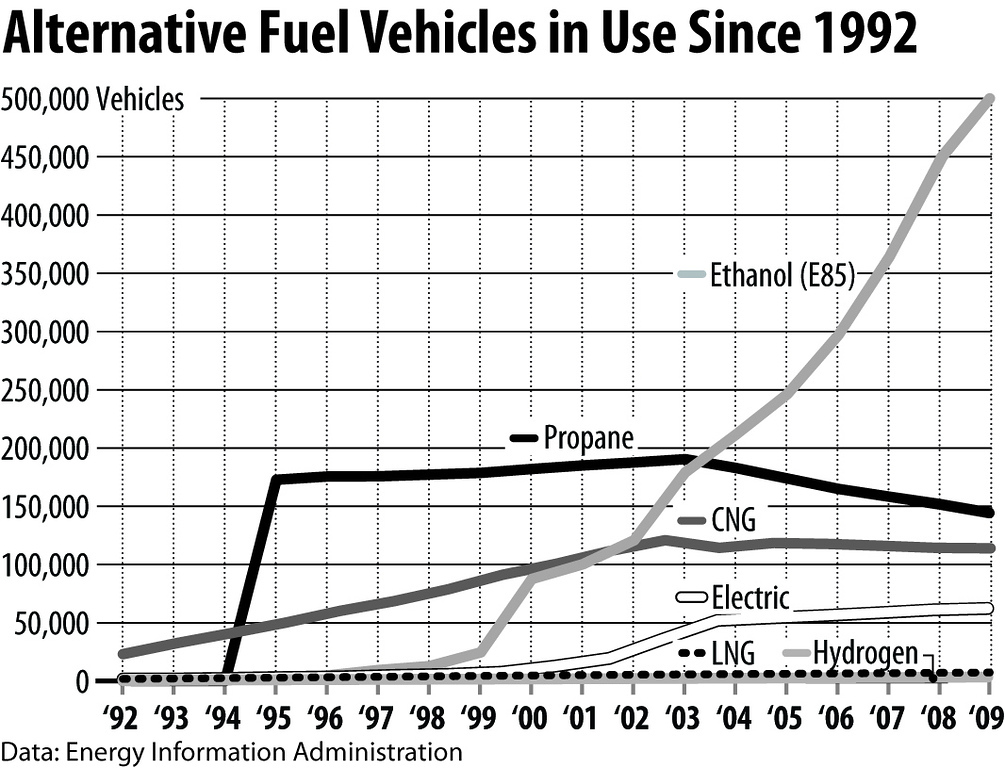A blog by Emily Hawbaker, Curriculum Director at The NEED Project
In the Market for a New Vehicle?
Television commercials would like us to believe that everyone who needs a new car will find one waiting for them during the holiday season, wrapped up with a giant bow. The automobile industry celebrates the end of a sales year and the start of the new one by offering hefty discounts on the previous year’s models and on the new 2013 models.
Many Americans are considering efficiency and conservation practices in their daily lives, and especially when it comes to their transportation needs. Fuel economy has become a major factor in vehicle purchases for many Americans. If you hope to capitalize on automobile sales in the new year, the U.S. Department of Energy makes vehicle shopping very easy, especially if MPG rating and environmental concerns are on your priority list.
DOE has recently released 2013 Fuel Economy estimates for over 1000 vehicles, including hybrid and electric vehicles, and even provides lists of the most and least fuel efficient vehicles. Upon visiting their site, www.fueleconomy.gov, consumers can view fuel economy guides for the last twelve years, and even run a side-by-side MPG comparison for almost any new or used car models, (1984 to present). The DOE site does a wonderful job of aiding consumers in making smart decisions about the correct automobile for their needs. The site breaks down the pros and cons of purchasing different types of hybrids; helping you to calculate if these models can help you save money based on your own driving habits, and just how quickly you can expect to see those savings. Consumers can also find out the latest news events and advancements in the automobile industry, what tax incentives are available, and even search to find the cheapest gas prices nearby. Find out your vehicle’s reported fuel economy now, using data from DOE’s Alternative Fuel Data Center!
Improved Fuel Economy – a New Year’s Resolution
Perhaps you are not in the market for a new vehicle. If efficiency is on your mind this year, consider making it a resolution to improve your fuel economy. According to the Energy Information Administration, Americans collectively drove 3 trillion miles in their personal vehicles in 2010, with the average American traveling around 12,000 miles per year. With each mile traveled, money is spent on fuel and emissions are produced. Improving your own gas mileage can save you money while helping to reduce emissions all at the same time. DOE’s fuel economy web site allows you to calculate your MPG rating and maintain a fuel purchase record. There’s even a tracking web site where you can track your fuel economy, share it with others, and compare it to the EPA test ratings provided in the DOE guides to fuel economy. Record it right from the pump if you like! Looking for ways to boost MPGs? Check out the weekly fuel saving tip, courtesy of DOE and the EPA.
Fuel Economy in the Classroom
Let’s face it; kids of all ages enjoy talking about cars – especially as they approach the legal driving age. Challenge your students and their families to record and even increase their MPG by using the DOE website, www.fueleconomy.gov. Host a contest with older, driving-aged students, encouraging them to record and share their own fuel economy. Compete with your own family to see who can make the most improvement, and share the results with your class, asking them to help you do the calculations.
Addressing transportation fuels and fuel economy in the classroom fits nicely with energy units of all shapes and sizes. NEED has a great list of resources and activities for students of all ages to become more transportation energy-aware, while considering their own family vehicles and those vehicles for sale.
- Pretzel Power is a great up-and-moving style activity. Students will identify and compare the energy efficiency of different types of vehicles, and the benefits of shared transportation by using a favorite snack food item!
- NEED explores transportation fuels at all levels with itsTransportation Fuels Infobook for elementary students and also intermediate and secondary students. These guides allow students to explore the fuels that power our vehicles and gain insight into the future of the transportation industry. These guides are a great supplement to the following hands on and group activities: Transportation Fuels Debate, Transportation Fuels Expo, and Transportation Fuels Rock Performances, and Transportation Fuels Enigma.
- Road Trip is an excellent activity for older students to reinforce mathematics and geography skills, while considering fuel economy. This activity, found in the Exploring Climate Change guide, challenges students to choose any vehicle they would like and plan a road trip. Students must calculate the total number of gallons of fuel they used and the pounds of carbon dioxide emissions associated with their trip and vehicle choice.
- Carbon Footprint, found within NEED’s Carbon Capture, Utilization, and Storage guide, allows students to visualize MPG ratings and carbon emissions using charcoal briquettes.
These activities and many more are available for free download at www.NEED.org.




